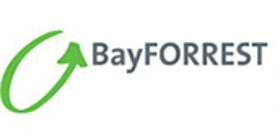BayFORREST
BAVARIAN RESEARCH ASSOCIATION FOR WASTE MANAGEMENT AND RECYCLING RESEARCH

(5) Sustainable area recycling
Nowdays, there is a large number of areas, the so-called toxic waste disposal sites, which have lost their previous function and use and have to be again integrated into the economic and environmental recycling process. Dormant industrial, military and traffic areas, as well as landfill sites in general, count as these areas. Sustainable areal recycling refers to the use-related integration of these areas into the economic and natural cycle by means of scheduled use of environmental technology, politics and economy as well as other measures. Consequently, different questions have to be taken into consideration. On one hand, the various steps of the landfill processing – survey, assessment, and rehabilitation – must be planned and carried out. On the other hand, a utilization concept based on these measures must be agreed on. For the investigation, evaluation and remediation of waste disposal sites use can be made of already-existing solution concepts, which are optimized and customized to fit each specific case. The scope and effectivity of waste disposal site remediation (decontamination or containment) are however often suboptimal due the lack of optimized problem-solving approaches. On one hand, the procedure used may be insufficient or may be carried out with inadequate means; on the other hand, the extent of remediation may unnecessarily exceed the realistic remediation demand. In addition, the mostly complex structure and composition of waste disposal sites are often insufficiently investigated. Hence, BayFORREST established the sector for sustainable areal recycling in order to point out new integrated solutions. In addition, special emphasis is placed on the evaluation of the emission-, transmission-, and immission-potentials of a landfill site with respect to the different impact pathways (soil – man; soil – groundwater; soil – plants). The development of reliable methods for the prognosis of leachate as well as predicting the behaviour of contaminats, especially with respect to their degradadation and/or spreading in intact underground or following intervention through active remediation measures, should be intensified. Even the intensive effort to recycle solid wastes, eliminate contaminants and recover raw materials, will not result in the complete avoidance of disposable solid wastes, thus making landfillsites superfluous. Here it is necessary to deposit unusable wastes in landfill sites in an environmentally-friendly manner. Filled landfill sites should be integrated into the natural environment according to the concepts of sustainable areal recycling. During the filling of a landfill site as well as during during its renaturation special emphasis must be given to minimizing the risks associated with the deposition of wastes. The options for optimization of surface sealings, investigation of long-term behaviour, and reduction of the number of existing landfill sites must be carefully considered.



